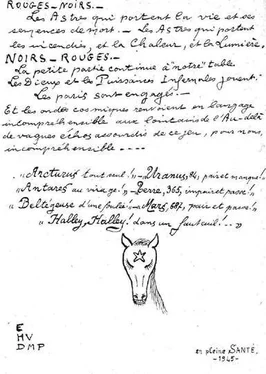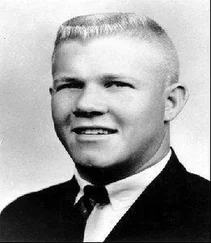While appearing “amoral and unbalanced,” Petiot was found to be “free from delirium, hallucinations, mental confusion, intellectual disability, and pathological excitation or depression.” He, in short, “presented no psychopathic trouble susceptible to justify a prolongation of his internment” and should be released from custody, which was done on February 20, 1937.
Inside the report was a warning that “in the event of a future criminal indictment,” Petiot’s stay in a mental institution “should not weigh excessively in the deliberations.” This internment, in other words, did not mean that he was insane, and Petiot should be held responsible for his actions.
But would this testimony be strong enough in case of an insanity plea now? As of November 1944, Petiot had convinced some psychiatrists that it was necessary to confine him in an asylum; others had concluded that he had cynically exploited French law to mimic symptoms of a troubled mind. The debate was far from over.
24.
BEATING CHANCE?
BESIDES, I NEVER HEARD OF A DOCTOR-SURGEON-MAYOR-MURDERER IN FACT OR FICTION, MUCH LESS ONE WHO WAS ALSO A SPY, OR INTELLIGENCE INFORMER, WRITER, CARTOONIST, ANTIQUE EXPERT, MATHEMATICIAN, OR WHO CALMLY CLAIMED POSSIBLY A HUNDRED AND FIFTY VICTIMS … HE HAD LOST COUNT.
—Dr. Albert Paul
IN Cell 7 of Sector 7 of the Prison de la Santé, Petiot was confined in a space, nine feet by twelve feet, with little more than a bed, a couple of blankets, a water faucet, a chair, and a small table chained to the floor. He read, dabbled in poetry, and doodled, handing over some of his sketches to one of the armed guards who were posted outside his cell twenty-four hours a day. He also sewed, knitted, embroidered, and smoked heavily, earning the nickname “Cigarette Butt.”
When one prisoner shared some cigarettes, Petiot thanked him with some lines of his own poetry. The piece was an obvious parody of a work that circulated through French prisons that autumn, by the writer Robert Brasillach, then imprisoned for collaboration, but it ended in Petiot’s own style:
It would be marvelous to see a town in arms
,
Crying “Get the bastards!” or, without the least alarm
Sacking the palace of justice. But more than that
,
Skinning this one and then that one
,
So that it would be beautiful to see them die a slow death
,
And to see, for ten years, ten skins of judges put up for sale
.
A prisoner across the hall, however, suggested that it was not the judges who should be skinned. “If Petiot is condemned as he deserves,” the man screamed, “he will be carved up in slices like a sausage.”
Another prisoner, who later spoke with a reporter for France-Soir , described Petiot as “very cultivated, very intelligent. He has sound judgment, he holds forth intelligently on his favorite authors: Voltaire, Beaumarchais, Anatole France. He detests deeply his [medical] colleague Céline, whom he holds for a madman, and whose scatological prose he loathes.” Petiot was also credited with devising a way of communicating with fellow prisoners by slipping messages inside pieces of bread, and keeping abreast of the news. On April 12, 1945, Petiot reportedly announced the death of Franklin D. Roosevelt to his guard, who had not yet heard the news.
Petiot did not have a great deal of contact with other prisoners. Nézondet, held in a different cell as an alleged accomplice, claimed to have bribed guards to speak with Petiot on walks in the garden. “I never saw the least emotion on his face,” Nézondet said. “He gave the impression that he could not care less what happened to him.”
A few days after arriving at La Santé, Petiot had shaved off his mustache and dark beard and begun work on a manuscript that would serve as his primary occupation in prison. It was a bizarre book. Rather than directly addressing the murder charges he faced, Petiot concentrated on offering tips on how to defeat the odds in games of chance, from poker to the lottery, roulette to the races. Still, the work, with its many columns of calculations, astrological symbols, and often surreal ramblings, provides insight into his state of mind.
Human beings—described as animated “meatballs”—roamed a world that had degenerated into “a concert of bitterness.”
Not a single one of all creation is content with its fate. The stone is sad thinking of the oak that grows in the sun. The oak is sad thinking of the animals that run in the shade of the forest. The animal is sad thinking of the eagle that ascends the blue sky. And man is sad because he cannot understand why he has been placed here, and he knows all his imperfections
.
“This is a serious book that I am writing to amuse myself,” Petiot wrote in a small, clear, and unadorned cursive. “By reading it seriously, you will amuse yourself and certainly gain something.” He dedicated the manuscript: “To you who have given me this leisure …” The research, he wrote, was undertaken by “Doctor EUGENE, ex-Chief of the Resistance Group FLY-TOX.” The columns of numbers were under the supervision of Captain Valeri. The errors in the book should be ascribed to Dr. Marcel Petiot. The title of his 360-page work was to be Le Hasard vaincu , or “Beating Chance.”
Chance as commonly understood, Petiot argued, was really an illusion. “There is no chance,” but only “probabilities that submit to special laws.” All of these could be discovered with reason and application because, as he put it, “there is no effect without cause, and all effects result from a certain number of causes,” which are often multiple and complicated. But once a person discovers those laws, he or she can control them and apply them with profit. Petiot promised to guide the reader through this uncharted territory, this “virgin forest bristling with calculus.” The attempt to play games and master “chance” reveals a great deal about the murder suspect—Petiot the gambler and risk-taker who prided himself on overcoming opposition, regardless of the odds, the obstacles, or evidently any moral scruples.
Authorities, in the meantime, continued looking for the identity of his alleged victims. On November 10, 1944, any person who had a member of the family or a friend disappear between January 1, 1942, and March 11, 1944, was invited to the quai des Orfèvres to look through a collection of clothing, household goods, and other personal items believed to have belonged to Petiot’s victims.
Fifty-three suitcases would be on display, including the forty-nine found last spring in Neuhausen’s attic in Courson-les-Carrières. The remaining four bags consisted of items discovered in closets at rue Le Sueur, or at Neuhausen’s house. These included three blouses, thirteen dresses, fourteen nightgowns, sixteen girdles, and twenty-four pairs of panties. One journalist referred to this macabre exhibition as the “Petiot Exposition at the Gallery Orfèvres.”
Like many Parisians that autumn, Petiot followed with interest the high-profile chase and eventual arrest of Henri Lafont and Pierre Bonny. On November 30, thanks to a tip from a former member of the French Gestapo who had hidden inside the Resistance, Lafont and Bonny were found on a Burgundian farm outside Bazoches. This hideout was suspected of serving as the center of a network to help former Gestapo men and informants escape the country. The police barged in on this embryonic “French Odessa,” captured the men, along with a stash of five to ten million in francs and jewels, a fraction of the treasure they had looted during the Occupation.
On December 12, 1944, less than two weeks after the arrest, the jury reached its verdict. Both Lafont and Bonny, as well as five of their men, were guilty and would be executed by firing squad on December 27, 1944. Petiot said sarcastically that these traitors had been “honorably” executed while he would likely be sent to the guillotine for doing the same thing as French justice: punishing traitors.
Читать дальше












